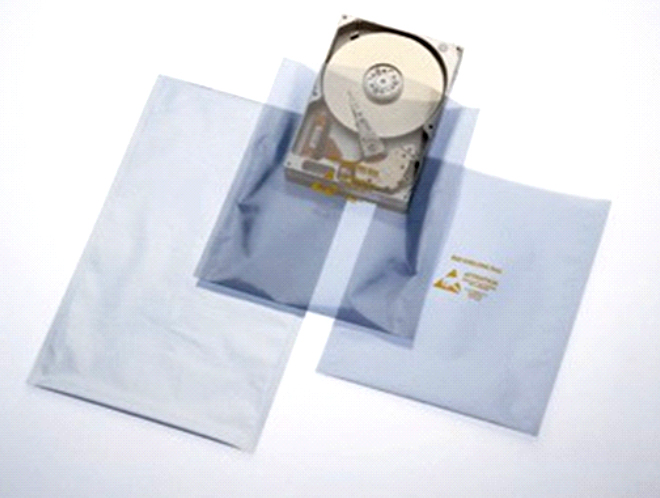The Real Cost of Ignoring ESD Protection in Electronics Manufacturing
- vidith cc
- Jun 2
- 4 min read
Electrostatic discharge—better known as ESD—is a silent killer in electronics manufacturing. You can’t see it. You can’t hear it. But the damage it causes? That shows up in warranty claims, production delays, failed components, and frustrated customers.
Still, many factories and assembly units don’t take ESD seriously until it’s too late. If your team works with PCBs, microchips, semiconductors, or any static-sensitive components, proper ESD protection isn’t optional—it’s essential.
In this post, we’re breaking down the real costs of ignoring ESD, how it affects your production line, and how you can prevent thousands (or even lakhs) in damage with simple ESD-safe tools and materials.
What Is ESD and Why Should You Care?
Electrostatic discharge is the sudden flow of electricity between two electrically charged objects. It happens all the time—just think of the little zap you feel when you touch a metal doorknob after walking on a carpet. That zap might feel harmless to you, but to a sensitive electronic component, it can be fatal.
Even a discharge as low as 30 volts can damage or degrade microelectronics. For comparison, the static you feel from walking on a carpet can exceed 3,000 volts.
In a fast-paced manufacturing environment, it only takes one ungrounded technician or one non-compliant workstation to create serious long-term damage.
1. Invisible Component Damage and Latent Failures
The most dangerous kind of ESD damage is the kind you can’t see right away.
Instead of instantly frying a component, static discharge often causes latent damage—weakening the part just enough for it to fail later. The component might pass final inspection and even work perfectly in early use, but over time, the degradation leads to failure.
And here's the kicker: when that failure happens, it’s incredibly hard to trace it back to an ESD event.
This means:
You're left guessing what went wrong.
Your engineers waste time trying to identify the root cause.
Your customers lose faith in your quality control.
All of this because one operator didn’t wear an ESD wrist strap, or a table wasn’t covered with an anti-static mat.
2. Warranty Returns, Repairs and Customer Complaints
Every failed product has a ripple effect.
If a PCB fails in the field because of ESD damage, the cost doesn’t stop at just replacing the part. You’ll have to:
Handle the return shipping
Test and diagnose the product
Replace or repair it
Reship to the customer
And possibly deal with a hit to your brand’s reputation
In some industries—like telecom, aerospace, and medical devices—this kind of failure can even result in regulatory issues or lost contracts.
On top of all that, many product returns caused by ESD damage are wrongly classified as “design defects” or “component failures,” which means you might be solving the wrong problem entirely.
3. Downtime and Production Disruptions
In modern manufacturing, time is money. When ESD causes a defect during assembly or final testing, production can grind to a halt while your team tries to identify and fix the issue.
Sometimes, these issues aren't discovered until much later in the process, forcing rework or even scrapping of full assemblies. Every hour spent diagnosing and repairing ESD-related problems is time not spent building and shipping products.
By the time the issue is traced back to static, you’ve already lost:
Product units
Labor time
Testing capacity
And customer delivery timelines
4. Compliance Risks and Lost Clients
Many large electronics companies and OEMs require their suppliers to maintain ESD-safe work environments. Failing to meet these standards can mean:
Failing a client audit
Being removed from an approved vendor list
Losing key contracts
Or facing penalties for non-compliance
ESD-safe protocols aren't just suggestions—they're often a formal requirement in vendor agreements, especially in sectors like automotive electronics, aerospace, and consumer electronics.
Setting up a compliant ESD-safe workstation—with grounding points, ESD flooring, wrist straps, and anti-static packaging—is often a prerequisite for working with high-value clients.
5. The True Cost of Inaction vs Cost of ESD Protection
A single damaged microcontroller may cost only a few hundred rupees to replace. But once that failure causes a delay, return, or defect in the field, the actual cost can balloon into thousands.
On the other hand, here’s what basic ESD protection might cost:
ESD wrist strap: ₹200–₹500

ESD table mat: ₹1,000–₹2,500

Grounding cord: ₹150–₹300

ESD-safe tools: ₹500–₹2,000 per tool
ESD floor mat: ₹2,000–₹5,000
Anti-static storage bins: ₹300–₹1,000

ESD shielding bags: ₹5–₹30 per bag

Even a fully ESD-protected workstation setup can cost less than the price of replacing just a few faulty products. And more importantly, it builds quality, compliance, and customer trust into every product you deliver.
Simple Steps to Protect Your ESD Safe Work Area
Creating an ESD-safe manufacturing environment doesn’t have to be complicated. Here are the essentials:
Wrist straps and grounding cords – Ensure all operators are grounded during assembly.
Table and floor mats – Use conductive or dissipative surfaces to prevent charge buildup.
ESD safe tools – Regular pliers and cutters can generate static. Use certified anti-static tools instead.
Static-shielding packaging – Bubble wrap and plastic bags won’t protect your components. Always use ESD-safe bags and boxes.
Regular audits and training – Keep your staff updated on ESD protocols and spot-check workstations.
These small changes make a big difference—both in reliability and in cost savings over time.
Final Thoughts: Don’t Wait for a Failure to Act
If you’re manufacturing, assembling, or even just handling sensitive electronics, ESD protection isn’t just a good idea—it’s a must.
Many businesses only realize the importance of static control after experiencing major losses. But with affordable ESD-safe products and the right preventive setup, you can eliminate that risk from day one.
Whether you're upgrading a full production line or just getting started with ESD control, remember: prevention is always cheaper than damage control.

%20(65).png)





Comments